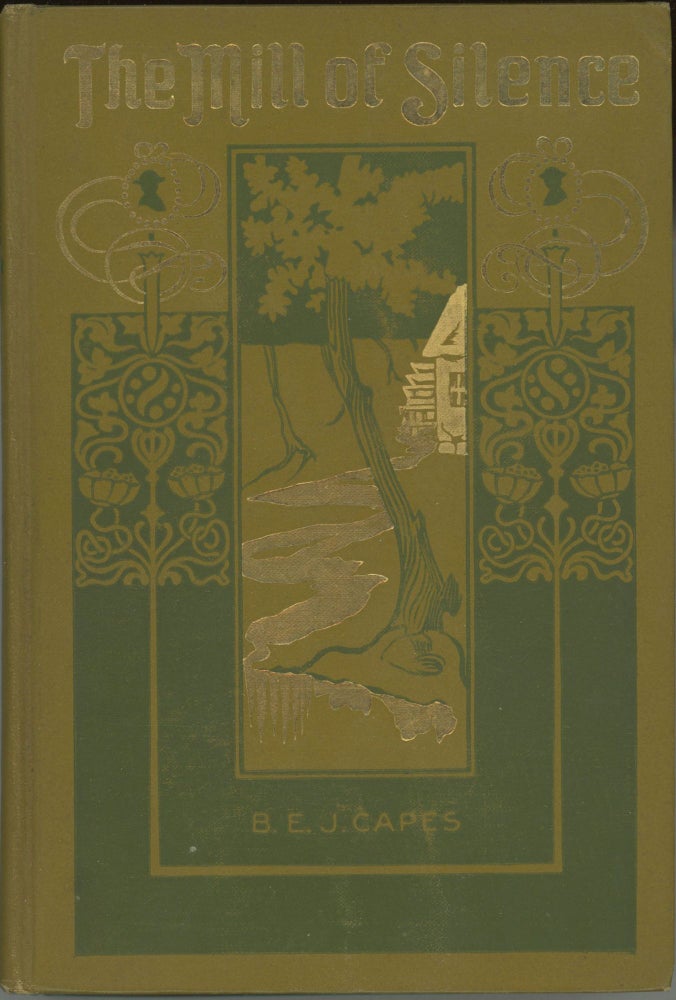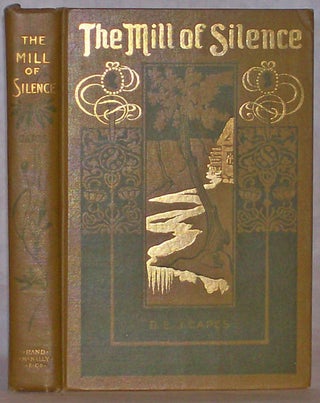THE MILL OF SILENCE. Chicago and New York: Rand, McNally & Company, MDCCCCXCVII[1897]. Octavo, pp. [1-5] 6-348, original pictorial olive cloth, front and spine panels stamped in green and gold, t.e.g., other edges untrimmed. First edition, first printing, first binding. Bernard Capes is now generally recognized as one of the masters of the Edwardian ghost story. What's not generally known is that the present title, his third novel and the first published under his own name, is a fully fledged weird tale replete with curses, fate, prophecies, a magnificently haunted room, and a pair of ghosts, one sinister, the other kind. The atmosphere of the book is soaked in a "high spectral gloom." The overtly supernatural incidents are few, but to call the book's weirdness "subdued" would be grossly inaccurate. It reeks of it. Its themes are weighty and its plot construction is intricate and polished. Not the least of its virtues are stylistic. "By lowering factory and grimy wall; by squalid streets peeled of uncleanliness in the teeth of the bitter blast; by lowbrowed taverns, that gushed red on us a moment and were gone, he sped on with crooked paces, and I followed" (p. 167). The book is shot through with dozens of little touches -- gruesome ditties and feverish babblings, references to folkloristic magic and superstition -- that build up a sense of the uncanny and dreadful. A gravedigger, talking with the hero about macabre doings in the churchyard, is frightened by a wasp. "Who ever see a pink warsp wi' a mouth like a purse and blue inside?" (p. 247). THE MILL OF SILENCE is also a full-blooded mystery yarn, delving into theft, blackmail, adultery, false imprisonment, child abandonment, murder and suicide. The tone generally is passionate, in contrast to the detached craftsmanlike manner of his later stories. The novel won second prize (in a field of 861) in a "Stories of Mystery" contest sponsored by the CHICAGO RECORD in 1896, and was published the following year (as by "B. E. J. Capes"). It was not issued in England until 1899, when it came out as part of a series of cheap paperbacks, now very rare. The first cloth edition was produced by John Long at a still later date. Hubin (1994), p. 131. Not in Bleiler (1948; 1978) or Reginald (1979; 1992). A fine copy. The first issue is rare. (#130234).
Price: $1,250.00
No statement of printing.



